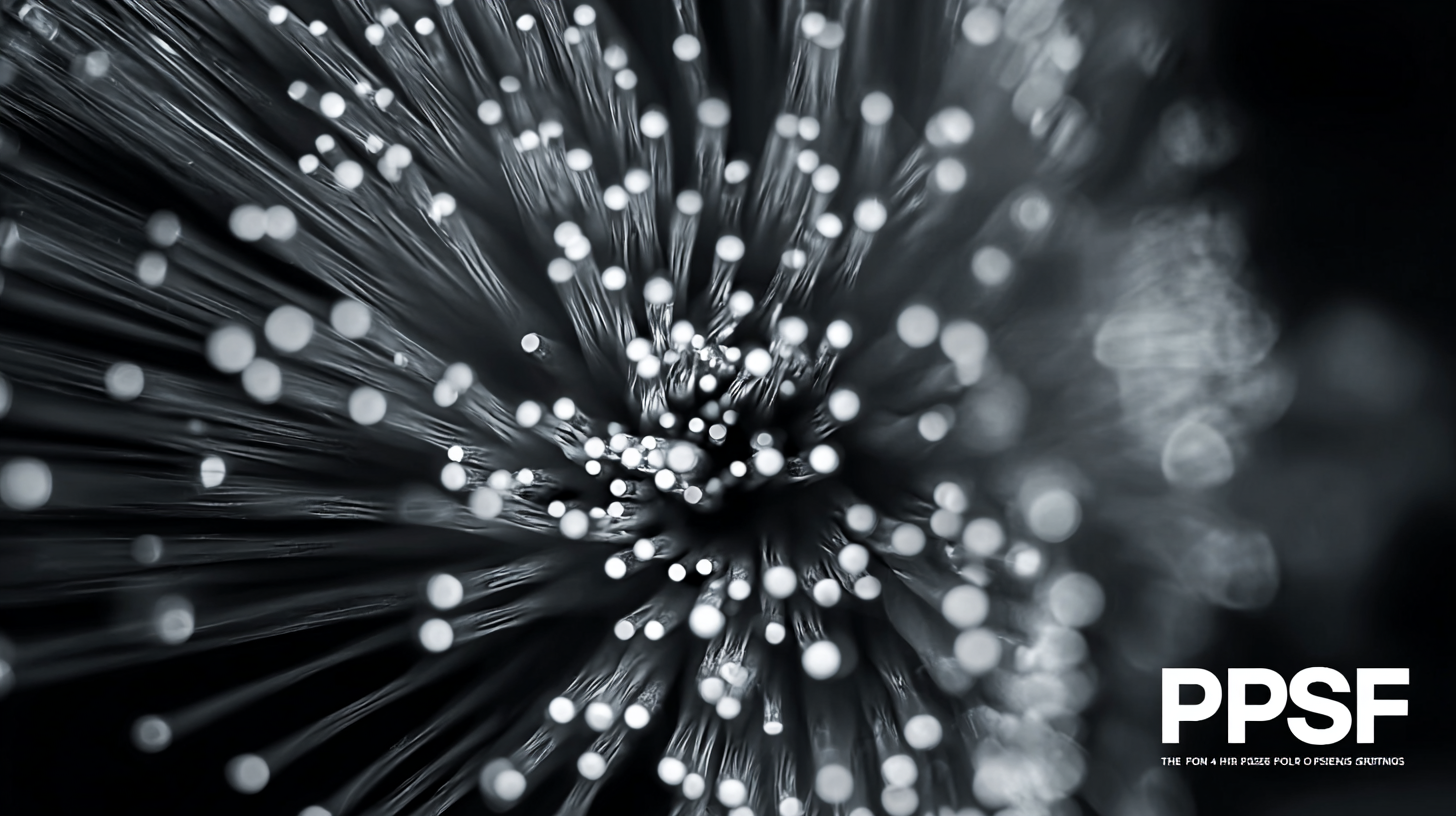
Discover the Advantages of Best PSF Fiber: Improving Efficiency and Reducing Costs in Manufacturing
As the manufacturing landscape evolves, the demand for materials that enhance efficiency while minimizing costs continues to rise. In this context, PSF Fiber (Polyester Staple Fiber) emerges as a game changer, offering a robust solution that is revolutionizing various sectors. According to a recent market analysis by Grand View Research, the global staple fiber market is projected to reach USD 119.59 billion by 2025, largely driven by the growing need for durable and cost-effective textiles in clothing, automotive, and home furnishings. With its superior properties such as excellent resilience, moisture-wicking capabilities, and overall lightweight nature, PSF Fiber not only improves product performance but also significantly reduces production expenses. This blog will delve into the advantages of PSF Fiber, exploring its role in enhancing manufacturing efficiency while contributing to sustainable practices in the industry.

Exploring PSF Fiber: A Game Changer for Manufacturing Efficiency
In the fast-paced world of manufacturing, efficiency is paramount, and PSF fiber has emerged as a transformative solution for companies looking to enhance their productivity. This innovative fiber, known for its superior resilience and lightweight properties, allows manufacturers to streamline their processes. By incorporating PSF fiber into their production lines, businesses can significantly reduce waste and improve the quality of their end products, leading to faster turnaround times and increased customer satisfaction.
One of the standout features of PSF fiber is its versatility. It can be utilized across various manufacturing sectors, from textiles to automotive components. The inherent efficiency of PSF fiber not only cuts down on material costs but also lessens the environmental impact of production. As manufacturers adopt more sustainable practices, using PSF fiber becomes a strategic advantage, aligning profit-generation with ecological responsibility. The continuous evolution of PSF technology ensures that manufacturers are equipped with state-of-the-art materials that meet the demands of the modern marketplace.
Discover the Advantages of Best PSF Fiber: Improving Efficiency and Reducing Costs in Manufacturing
| Aspect | Benefits | Impact |
|---|---|---|
| Material Efficiency | Reduced waste and optimal use of raw materials | Lower production costs |
| Processing Time | Faster production cycles | Increased throughput and improved delivery times |
| Energy Consumption | Lower energy usage during manufacturing | Reduced operational costs and environmental impact |
| Quality Control | Enhanced product quality and consistency | Decreased returns and increased customer satisfaction |
| Versatility | Applicability across various manufacturing processes | Broader market opportunities |
Understanding Cost Reduction Through PSF Fiber Implementations
The implementation of Best PSF (Polyester Staple Fiber) in manufacturing processes has emerged as a game-changer, particularly in the quest for cost reduction. By integrating PSF fiber into production lines, manufacturers can significantly lower the material costs associated with traditional alternatives. PSF fibers are not only affordable but also versatile, allowing for a wide array of applications across various industries, from textiles to automotive components. The cost-effective nature of PSF fiber can help businesses maintain their profit margins amidst competitive market pressures.
Moreover, PSF fiber enhances operational efficiency by streamlining production processes. Its durability and strength reduce the frequency of material replacements and lower the energy consumption associated with manufacturing. This means less downtime and lower operational costs in the long run. As manufacturers adopt PSF fibers, they benefit from improved product quality and performance, ultimately leading to increased customer satisfaction and loyalty. By understanding the financial advantages of PSF fiber implementations, companies can strategically position themselves for long-term success while simultaneously optimizing their cost structures.
Real-World Applications of PSF Fiber in Various Industries
The adoption of best PSF (Polyester Staple Fiber) in various manufacturing sectors has showcased remarkable benefits in efficiency and cost reduction. In the textile industry, for example, PSF fibers are favored for their lightweight properties and enhanced durability. Reports indicate that utilizing PSF can lead to a reduction in production costs by up to 20%, primarily due to lower energy consumption during processing compared to traditional fibers.
In the medical field, PSF fibers find valuable applications, especially in the creation of membranes for blood oxygenators. Recent studies, including a comparative evaluation of polysulfone membranes, highlight their effectiveness in maintaining optimal oxygen saturation levels while efficiently removing carbon dioxide. By integrating PSF fibers, manufacturers can create more efficient blood oxygenation systems, which are crucial during cardiopulmonary bypass procedures. This technological advancement not only improves patient outcomes but also reduces the costs associated with medical supplies, offering hospitals and healthcare providers a more economical solution.
As industries continue to explore the versatility of PSF fibers, their role in enhancing production quality and streamlining costs will likely expand, paving the way for innovative applications across multiple sectors.

Comparative Analysis: PSF Fiber Versus Traditional Materials
In the manufacturing sector, the choice of materials plays a crucial role in product performance and cost efficiency. The comparative analysis between PSF (Polyester Staple Fiber) and traditional materials reveals significant advantages for the former. PSF fiber not only enhances the mechanical properties of various products but also offers superior durability, making it an attractive alternative across multiple applications. Moreover, PSF’s inherent features lead to cost reductions in production processes, ultimately benefiting manufacturers in terms of sustainability and waste management.
When examining dialysis membranes, for instance, the transition from cellulosic materials to synthetic options like PSF demonstrates substantial improvements. PSF membranes can provide better filtration capabilities while ensuring a longer lifespan, reducing the frequency of replacements needed in medical settings. Additionally, studies on insulation materials made from waste wool and recycled polyester fibers highlight the continued evolution of PSF-based products, addressing the growing need for sustainable solutions in construction. By leveraging these advanced materials, industries are not only meeting performance standards but also aligning with eco-friendly practices.
Future Trends: The Role of PSF Fiber in Sustainable Manufacturing Practices
The role of polyester staple fiber (PSF) in sustainable manufacturing is becoming increasingly significant as companies aim to reduce their environmental impact while maintaining efficiency and cost-effectiveness. The global market for PSF is projected to experience substantial growth, with a focus on eco-friendly innovations and practices that align with sustainability goals. As industries adapt to modern demands, PSF offers a versatile and recyclable solution that can help minimize waste and promote a circular economy.

In recent years, advancements in eco-friendly manufacturing processes have positioned PSF as a leader in sustainable production. Companies are investing in innovative technologies to enhance the recyclability of PSF, making it a desirable material for manufacturers committed to sustainability. With the polyester fiber market projected to reach USD 118.51 billion by 2030, the push towards sustainable practices is expected to intensify. This growth is accompanied by increasing consumer awareness and demand for environmentally responsible products, paving the way for PSF to play a pivotal role in the future of manufacturing.



